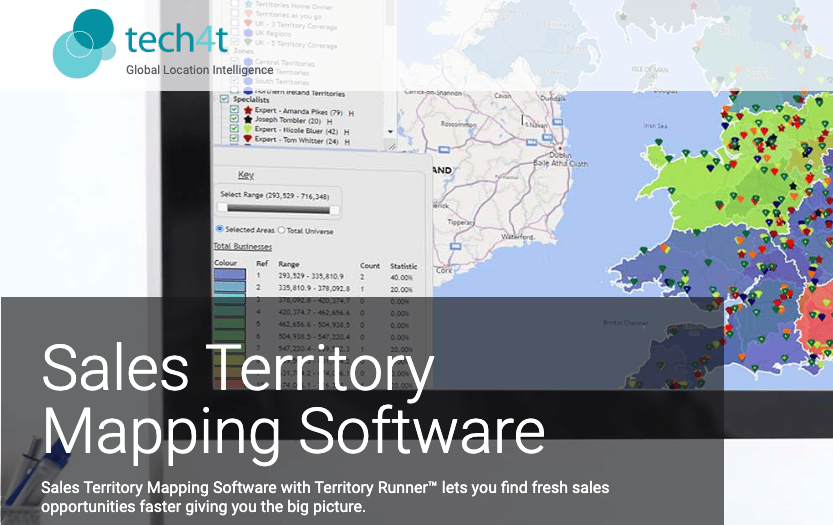Having a remote sales team is one thing but how do you ensure they are working efficiently and maximising opportunities, whilst saving them and you time and money?
At Tech4T we are often contacted by sales managers and directors keen to understand what they can do to optimise their remote sales teams’ activities and ensure their field force are hitting their targets.
Decades of research has revealed that – unfortunately – most remote sales teams work in territories that are based on historic and arbitrary boundaries, and waste valuable time and expense on servicing an area that is difficult for them to properly manage.
So we’re going to explain here three key things you can do to effectively improve the performance of your sales teams and give them the best chance of success.
Understand the locations
Just because an area has a well-known boundary (such as a county or state line), does not mean it will automatically lead to sales. In the UK, many counties (like states or other territories overseas) are sparsely populated or are populated by people and businesses that are the wrong demographic for your business.
Other counties may have poor transport links, or despite their large size be incredibly difficult to manage because the roads are so busy and travelling just a short distance takes hours.
Some sales territories may look ideal on paper but actually in reality offer few opportunities for sales because of local factors such as fierce existing competition or because the area is already dominated by a rival business.
Sales staff could face all these obstacles on a day-to-day basis simply because they have been assigned an area not based on data and intelligence, but instead on assumptions and often gut instinct (neither of which are based on fact).
Consider logistical factors
In the same way that it is vital to fully understand elements like transport links, congestion, and the time taken to travel between locations, it is also incredibly important to understand what is actually possible logistically for your remote sales teams.
Like everyone else, they have family and personal considerations that should be taken into account, and will have personal preferences when it comes to servicing their sales territory. Some may be happy to travel long distances and even stay overnight to meet a client or a prospect, whilst others may find this impossible due to their other commitments.
Sophisticated Location Intelligence Systems, like Tech4T’s Territory Runner system that is supported by data analytics and mapping experts, can factor all these considerations in and provide interactive zoomable maps for any location that show in an easy-to-understand visual way what is actually possible within a sales territory.
Set realistic territories
Many companies don’t realise or consider the fact that a sales territory can be custom defined based on exactly the factors important to the business and their growth plans. Arbitrary existing county or state boundaries (many of which were established hundreds of years ago) are generally a very poor indicator of sales success, yet more companies rely on these than don’t.
But businesses that have adopted an intelligence-led approach to their sales and their sales teams’ optimisation utilise the expertise of location experts and Location Intelligence Systems to create their own sales territories which are manageable for staff and present the same opportunities for every member of the field force.
Elements such as travelling time, distance, working preferences, number of target customers, competitors, and even the demographics of prospects are all factored in to create territories which rarely mirror existing geographic boundaries, but which result in far better results for the business and sales staff.
Conclusion
Sales team optimisation is a science based on data and intelligence, and reaps huge rewards for those companies that adopt it. The best partners work with you to precisely create and optimise your sales territories, leading to significant savings in terms of time and costs whilst maximising the sales returns.

